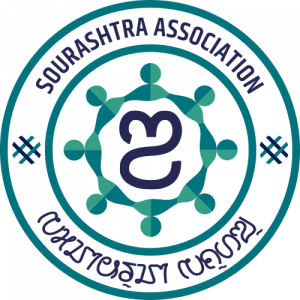Lesson Plan Level 3
Completion requirements
LEVEL 3
Conversation class, for students who are well-versed in avre vatto.
Focus on pronunciation. Never discuss the origin of the words. Lot of Tamil words that we use are derived from Sanskrit.
Don’t change the Dialects/accept the way the student speaks.
Each part can go two or more weeks. Add your creativity and imagination to elaborate the lessons.
Converse on each topic or part encouraging the students to discuss among them.
Teach more vocabulary including the old words like panponke, meerkaNi, khabiri, and bherkaLi etc.
Part 1
Meet and greet!
Ask the students to recall and tell how their parents greet their family and friends, also what and how they offer!(with a smile and positive outlook).
Looking into their eyes when speaking and serving with a smiling face.
Nodding when seeing someone when saying ‘kAi bei’ or ‘kAi dadA’ or ‘avo avo’, ‘Av babu’.
Part 2
Talk about the entire family.
Nuclear, grandparents on both sides, parent’s siblings and their family, in laws, grandchildren and others.
Gheru nAv, anghEr nAv and the uniqueness of our culture.
How to address the relatives. The specialty of our language is having words for all kinds of relations.
We will focus on grammar not using the grammatical terms 😊
Part 3
mii, mogo,morae- make sure students know the usage of these!
mii – ami
tU- tumi
theno-thenu–thelle, aski
morae, avrae, turae, torae, tegaya, tenGkayo
Help the students make sentences and paragraphs with these words(Places) and more!
Narration of stories or happenings.
Part 4
Three tenses (past, present and future)
change the verbs into different forms so that it coordinates with subject in a sentence.
Example:
kEr
keritte, keraeyo, keris, keraes, kerAEs.
kerartte, kerariyo, keraris, keraras, kerararAEs.
keru, kerai, keran.
ker rhavvAi, ker rhAi. ker rhAn.
keruvAi, kera rhAn.
Part 5
Conjunction - kin,aski, hoyet, hoyet maeLLi, tevaL, kaere(cale, khaye, dhuve) vEngu,(vonnu), hAli, tikkAm, tii nhinAtto, hoyeti (jiyeti, aveti, khayeti)meLLi, phiir, phalcAtu, jiye(bise, khaye, diye, huTe, bhunje,dhame,dhuve)hAtur.
ko, uk, Ak, hAl, jOL,kucci, (tega, telle, yega, more)gani, maeLLi and rhii etc.
Example:
tenko, tET rhii, morjOL rhii, mii maeLLi, aski tenu, kAviyAjOL rhii
babuk, mAyik, sunAk, kAviyAk
teka kucci, teka gani, teka hAl, poLge lhekkAk, rhiyet meLLi.
Part 6
Negatives(distinction of ‘n’ as negative and plural)
khAna, bisuna, avna etc.,
Refer Radha bei’s original lesson on various negative forms(poltam.sourashtraassociation.org)
avai. avan
avan, avnAn
bovnA, bovnAn
Part 7
Adjectives/nouns of quality or quantity
mii vunno mOlu boTTo khadittE
mhoDo beTo
najjae poLLo
pheleT pillo
cokaD beTki
gheDi monnu
bhAr khoLTi
unco beTko
poLge yetunam
taTa pani
deTTu khEs
Part 8
Our rich culture, customs, and history.
Our story – how our ancestors migrated from north to south,
The reasons for our language being influenced by Tamil and Sanskrit.
Part 9
Active and passive actions.
kha khavAd
biis bisAD
refer to the lists in the
polltam.sourashtraassociation.org for exhaustive lists of all these examples.
For learning long sentences,
speeches and comprehensions from
literary passages and stories will be helpful.
Part 10
Complex sentences.
Example:
jukku povs poDeya, hAlti jhADun muTTi viidum poDraes.
char pAnjc vAL angidi jii maeLLa mogo pajae hoyae boggu abbeni.
mii khaiti, hAt dhuvti, khaLatto jiitte.
mullo pajae hoye savlo atto pajae nhii.
avlEt jilEt rhiyet gurtu kaLAi.
refer to the example conversation in Sou.lessons.
Part 11
Passages for comprehension could be used from our literary books. e.g. niiti sambu,
vAlmiiki RAmAyaNa sankSEpu, phaila pustavu, khenin etc.
This will show how to narrate happenings in daily life.
Etiquettes of using proper words in hospitality.
Encourage oral skills of communication by assigning topics.
Last modified: Saturday, 23 October 2021, 5:20 PM
